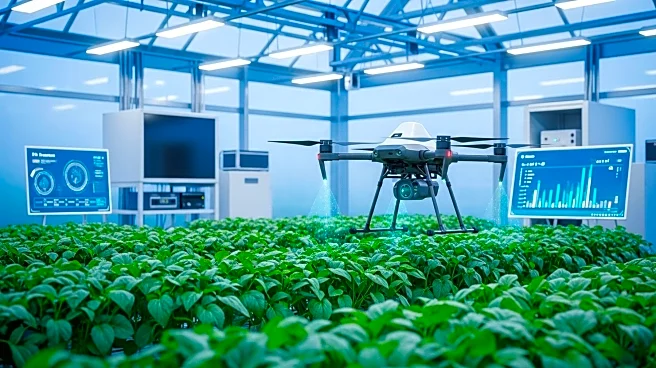What's Happening?
Research in cement and concrete materials is advancing to address the environmental impact of cement production, a significant source of CO₂ emissions. Scientists are exploring nanotechnology to enhance the strength and durability of concrete, while supplementary cementitious materials like fly ash and slag are being used to reduce reliance on Portland cement. Alternative binders such as geopolymers and calcium sulfoaluminate cements offer sustainable options. Digital fabrication techniques, including 3D concrete printing, are revolutionizing construction by minimizing waste and enabling complex designs.
Why It's Important?
The construction industry is a major contributor to global CO₂ emissions, making innovations in cement and concrete crucial for environmental sustainability. By reducing the carbon footprint of cement production, these advancements support global efforts to combat climate change. Improved concrete materials can lead to more durable infrastructure, reducing maintenance costs and extending the lifespan of buildings and roads. The integration of machine learning in material design further enhances predictability and customization, optimizing performance and sustainability.
What's Next?
Future research will likely focus on integrating CO₂ mineralization into concrete, developing ultra-high-performance and self-healing concretes, and expanding the use of recycled aggregates. As these technologies mature, they could become standard practice in the construction industry, driving significant reductions in environmental impact. Collaboration between researchers, industry leaders, and policymakers will be essential to accelerate the adoption of these sustainable practices.
Beyond the Headlines
The shift towards sustainable concrete materials reflects a broader commitment to green building practices. This transition not only addresses environmental concerns but also promotes economic resilience by reducing resource dependency and fostering innovation. As the construction industry embraces these changes, it could set a precedent for other sectors to follow, amplifying the impact of sustainable development initiatives.











